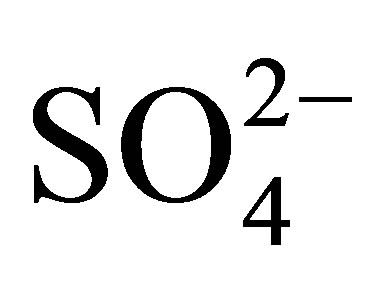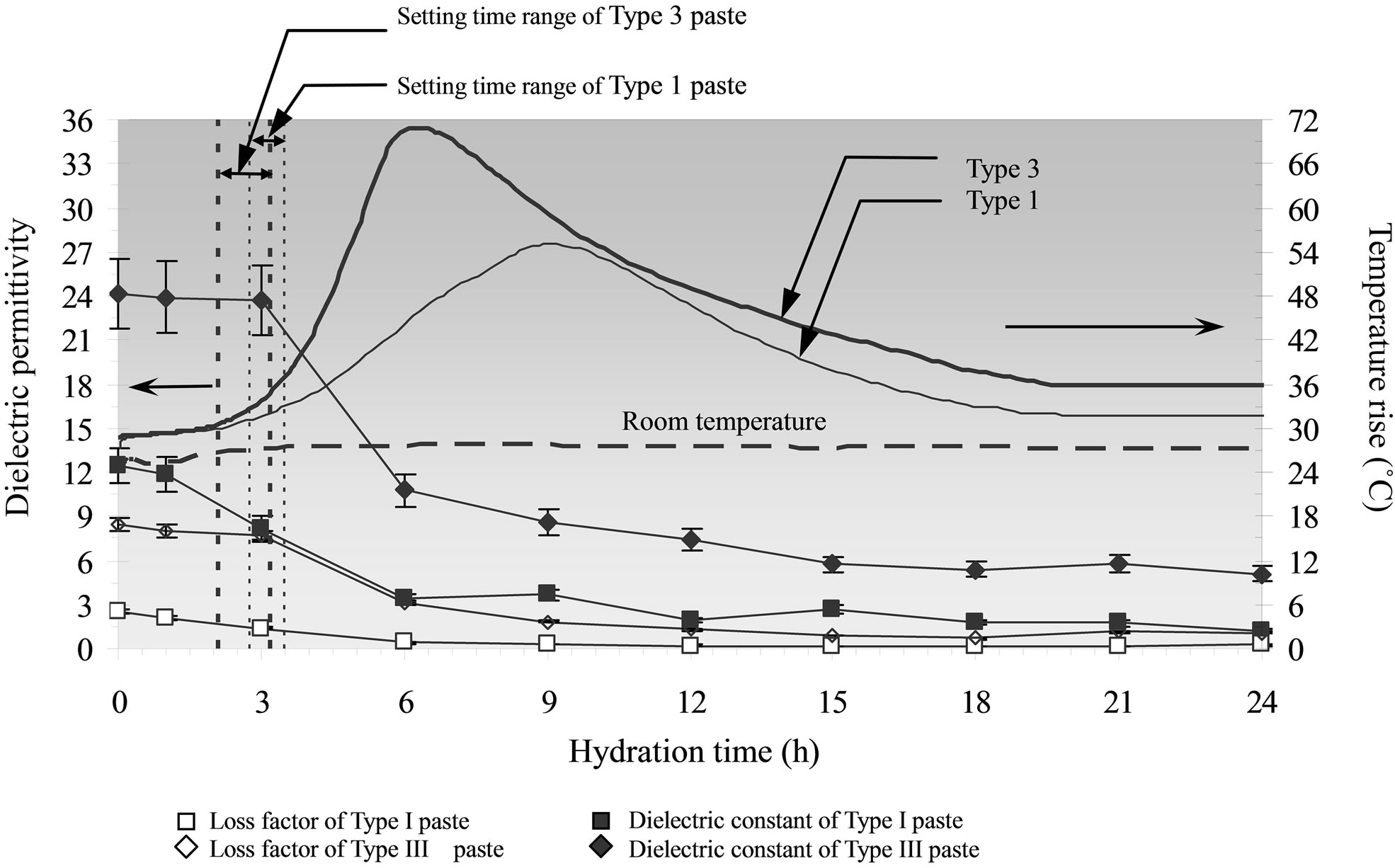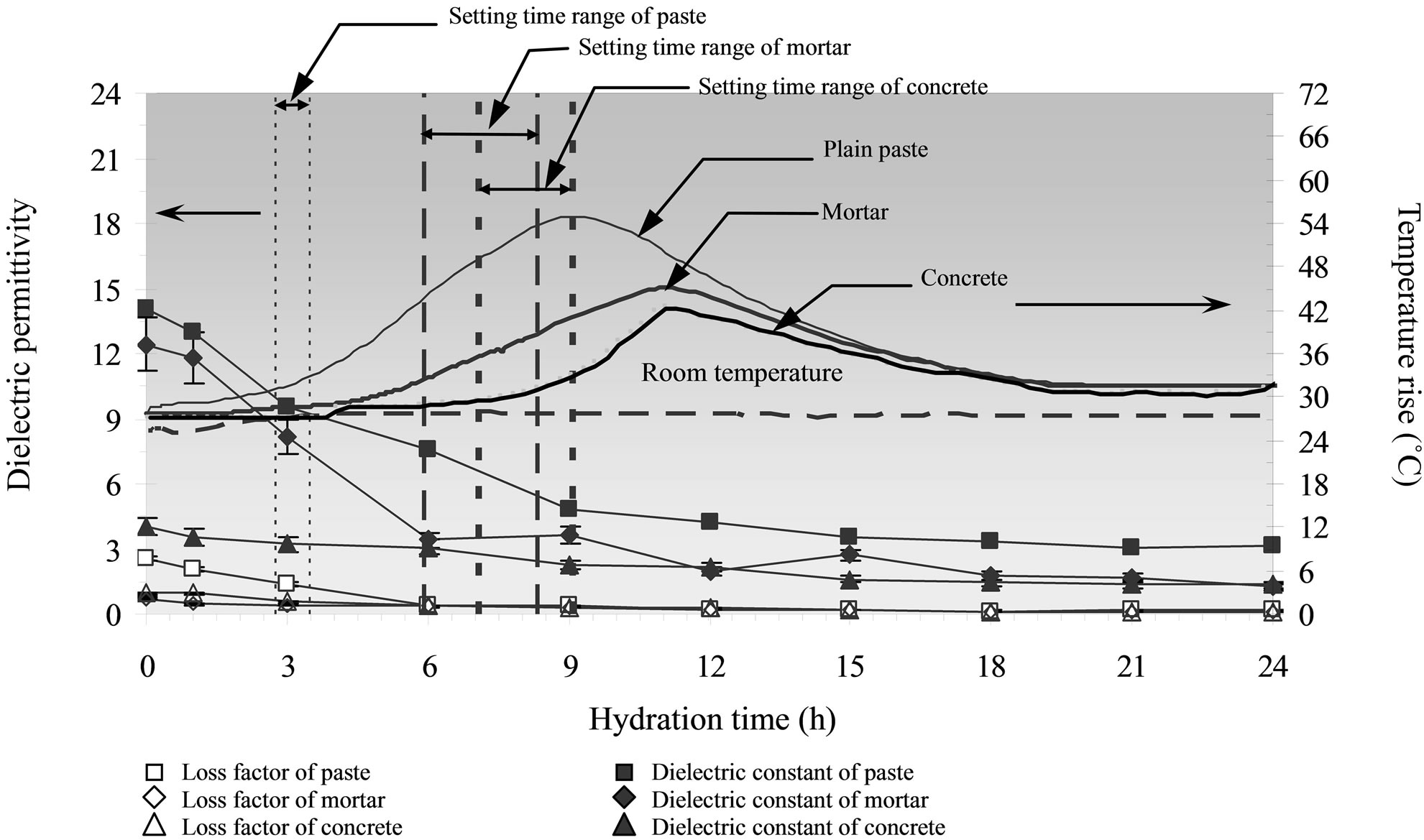Dielectric Permittivity of Various Cement-Based Materials during the First 24 Hours Hydration ()
1. Introduction
Microwave energy has been widely used as an innovative material processing for various industrial dielectric materials such as paper, wood, etc. Basically, microwave radiation interacts with the materials through dielectric permittivity resulting in rapid heating. Consequently, dipole interaction and heat generation will take place within dielectric materials which are composed of polar molecules [1].
Can microwave energy be applied to cure cementitious materials? The answer based on theoretical feasibility, is yes. Many research groups [1] have investigated, both experimentally and numerically, the accelerated curing of cements in order to gain high strength [2]. However, the actual number of successes has been very limited. A reason for this is lack of understanding of the behavior of dielectric permittivity of cement-based materials which, in fact, are greatly affected by temperature, free moisture content and hydration time. In particular, during the first 24 hours of hydration, it is critical to determine optimum conditions for high performance curing of the cementitious materials using microwave energy [3].
In this paper, the dielectric permittivity of cementbased materials during the initial period of hydration at 2.45 GHz has been investigated by using a network analyzer with an openended probe technique based on the influences of water-to-cementitious ratios, cement types, pozzolan materials and aggregates.
2. Experiments
2.1. Specimen Preparation
Three groups of 117 specimens having a cubical shape in size of 55 × 55 × 110 mm3 were tested for dielectric permittivity, temperature rise and setting time, They were made from Types 1 and 3 Portland cements in accordance with the ASTM C150 [4] pulverized fuel ash in a class of low calcium (Type F) in accordance with the ASTM C 618 [4], and silica fume in accordance with the ASTM C1240 [4]. River sand (FM. = 2.58) and crushed limestone rock (Max. Size = 10 mm), having a grade conforming with the ASTM C33 [4], were mixed with tap water to from pastes, mortars and concretes with various proportions, as shown in Table 1. Superplasticizer conforming to the ASTM C494 [4] was used in a recommended dosage (500 ml per 100 kg of cementitious materials).
2.2. Test Procedures
For measuring dielectric permittivity of cementitious materials in the range of 2.45 GHz, a network analyzer with open-ended coaxial probe [5] was used. After mixing and placing into the mold, it was then wrapped by Styrofoam with 5 mm in thickness in order to protect the

Table 1. Mixing proportions of pastes, mortars and concretes.
heat loss. Both dielectric permittivity and semi-adiabatic temperature using data logger with thermo-couple (Type K) were simultaneously recorded every 180 and 15 minutes, respectively. However, in order to eliminate the effect of thermo-couple embedded in microwave radiation, we tested separately three specimens for dielectric permittivity and three for temperature rise. Furthermore, the setting time of pastes, mortars and concretes were tested by Vicat needle, modified Vicat needle and penetration resistance in accordance with the ASTM C191 [4], ASTM C807 [4], and ASTM C403 [4], respectively.
3. Results and Discussion
3.1. Effect of Water-To-Cementitious Materials
Figure 1 shows the evolution of dielectric permittivity and simultaneous temperature rise of concretes. It can be observed that the dielectric permittivity at the initial stage is relatively high in comparison with the later stage, and also increases with the increasing water content (higher w/c) in the concrete. This is due to the fact that immediately after the contact between water and cement they start to react and then dissolve Ca2+, OH− and  ions into the system. In addition, during the dormant period, the dielectric permittivity changes very little because the chemical compositions of the aqueous remains remain nearly constant [6].
ions into the system. In addition, during the dormant period, the dielectric permittivity changes very little because the chemical compositions of the aqueous remains remain nearly constant [6].
3.2. Effect of Cement Types
Figure 2 shows the changes of permittivity throughout the early stage of 24 hours hydration reaction period. Permittivity remains at a high level and decreases at the end of the dormant period, approaching to a constant value when the internal structure has been stabilized. The dielectric permittivity of Type 3 pastes is higher than the Type 1 pastes because Portland cement Type 3 has finer grains of tri-calcium aluminate (C3A) [7] than in the Type 1 causing it to dissolve with a high rate and maintaining an ion-rich system. In addition, the rate of the decrease of dielectric permittivity of Type 3 paste is higher than that of Type 1. In the acceleratory period, the Type 3 paste reacts faster than the Type I paste. This coincides with temperature rise and shorter dormant period. For setting time, the dielectric constant is maintained until the final setting time because of the high dissolution rate, however the dielectric constant drops dramatically with the high hydration rate. At the later stage after formation of the C-S-H structure, the dielectric permittivity tends to remain constant because of strong constraints imposed by its structure.
3.3. Effect of Pozzolan Materials
Effects of silica fume (SF) and pulverized fuel ash (PFA) on dielectric permittivity, temperature rises and setting time of the pastes are shown in Figure 3. The dielectric constant of the paste containing PFA through the first 24 hours hydration time is higher than that of the plain paste, whereas the paste containing SF is lower. Both reactions involving SF and PFA occur as secondary reactions [8]. This means, however, that the PFA can produce excessive water in the paste while increasing Si3+ and Ca2+ ions in the system. This results in an increasing dielectric

Figure 1. Dielectric permittivity of concretes with different w/c ratios.

Figure 2. Dielectric permittivity of pastes with different cement types.

Figure 3. Dielectric permittivity of pastes with different pozzolan materials.

Figure 4. Dielectric permittivity of paste, mortar and concrete.
constant of the paste. Contrary to the SF paste, the com positions with PFA can dissolve it at a high rate, its fineness induces the bounding of its water molecules and ion-richness at the surface. As a result, the dielectric constant is lower than that of the plain cement paste. For loss factor evolution, the difference of loss factor is low between the conventional paste and SF-paste and large with PFA-paste; indicating that the remaining water content both during introduction and acceleratory periods in the paste has strong effect on the dielectric loss. On the other hand, the PFA particles can retain the free water in the paste system and this may raise the loss factor of the PFA-paste very high.
3.4. Effect of Aggregates
Figure 4 shows that the relative permittivity curves for the mortar and concrete are also similar to that of the conventional pastes but lower than the pastes. The decrease of cement content and the absorption of water molecules by aggregate surfaces induce a lower ions concentration in the system [9]. However, eventually, these parameters approach to constant. It can be compared in the setting time range that the slope of decrease rate of relative permittivity of the paste is somewhat higher than those of mortars and concretes. This is due to ion constraint by hydrated products which are high when compared with the aggregate-mixed ones.